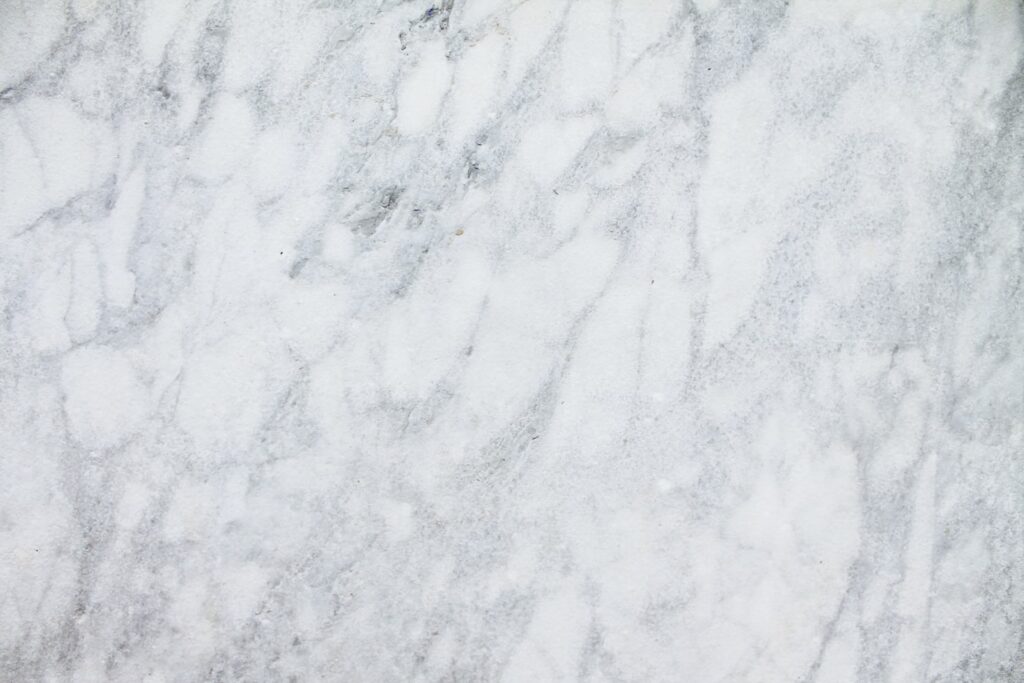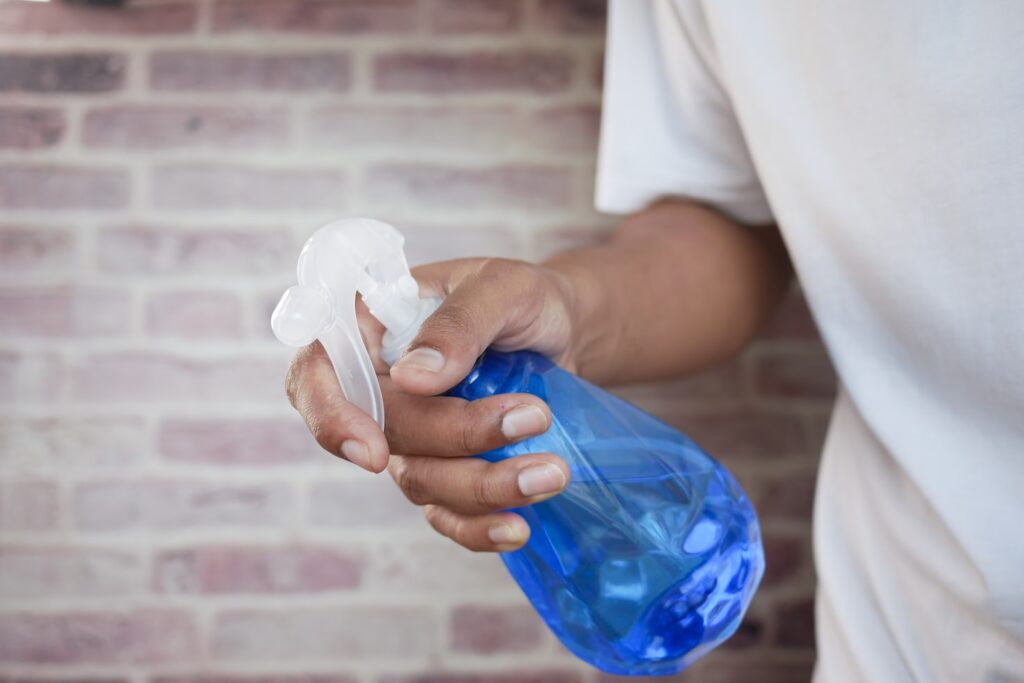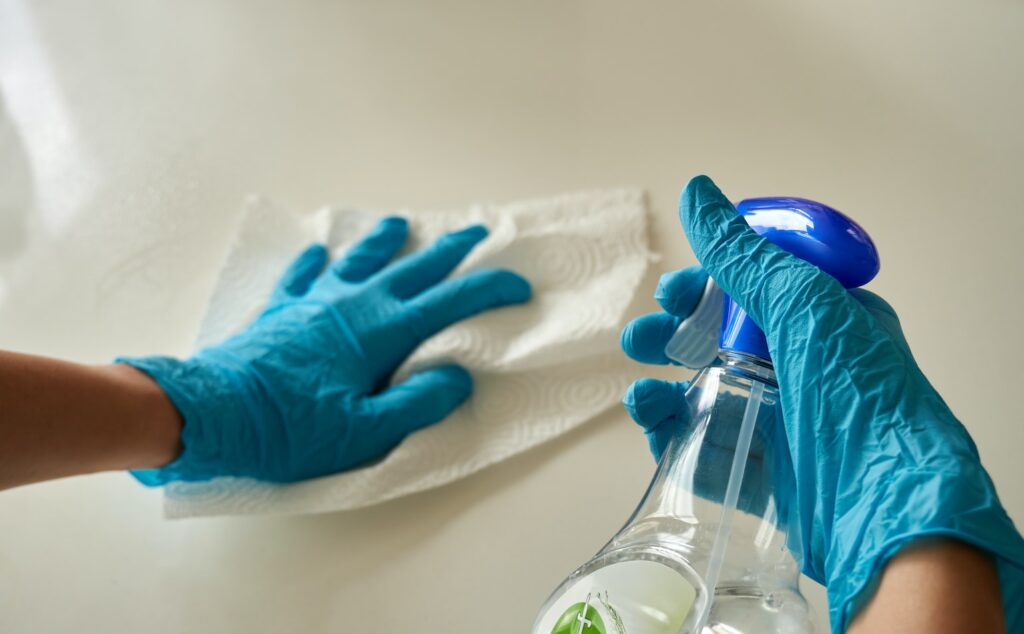Do you struggle to keep your marble surfaces clean and shiny? Did you accidentally spill lemon juice over your precious marble countertop and made a stain?
No worries! In this ultimate guide, you will learn how to clean marble the right way. You’ll also discover the materials you need and understand why it is essential to maintain your marble surfaces.
Whether it’d be marble floors, marble tiles or marble countertops, we’ll give you a quick and easy way to remove stains and make your marble surfaces shine again.
Get ready to achieve that pristine marble look effortlessly. Let’s dive in!
Key Takeaways
- Cleaning marble surfaces includes clearing any debris, carefully applying cleaning solution, rinsing, and finally drying the surface. You can also add polish if you want
- Promptly clean up spills and use coasters and trivets to protect the marble surface. Regularly cleaning marble surfaces can also help maintain its beauty.
- Be aware of substances that can cause stains, such as acidic liquids, red wine, oils, cosmetics, metals, abrasive cleaners, water, fruits and vegetables, dyes and inks, and harsh chemicals.
- If stains persist or if there are serious etches on marble surfaces, consider seeking professional help.
7 Easy Steps To Clean Marble Surfaces
1. Clear the marble surface of any items or debris.
2. Prepare your cleaning solution by diluting it in warm water.
3. Apply the solution on a soft cloth or a sponge.
4. Gently wipe the marble surface. Focus on the stains you want to remove.
5. Rinse the surface with warm water.
6. Use a hand towel or cloth to dry the surface thoroughly.
7. You can apply marble polish for some extra shine (optional).
Materials You Need
- Soft cloth or sponge
- Cleaning solution of your choice (mild dish soap, baking soda, etc.)
- Warm water
- Hand towel or microfiber cloth
- Marble polish (optional)
In cases wherein stains just won’t leave your precious marble surfaces alone or serious etches that you’re not sure how to handle, it’s time to ask the professionals.
Stone Protection can help you bring back the shine to your marble surfaces, whether it be marble floors, countertops, or tiles. They also offer other services like restoration and maintenance for other types of surfaces, too!

Step 1: Clear Any Items or Debris on the Marble Surface
The first step to cleaning your marble is to declutter the area. Grab a soft cloth or brush and gently sweep away any loose dirt, dust, or crumbs that may be lingering on the surface.
Removing these particles will not only improve the overall appearance of the marble but also prevent scratching and damage during the cleaning process.
So, take a moment to clear the stage before we dive into the next steps. You’ll be amazed at how much of a difference this small act can make!
Step 2: Prepare Your Cleaning Solution
The next step is preparing your cleaning solution. You cannot use these solutions on their own – you have to dilute them in warm water so they’re safe to use on your marble.
Here are possible cleaning solutions you can use to clean your marble floors and countertops and how to use them:
Mild dish soap
For regular cleaning, you can use a simple mixture of mild dish soap and water to clean marble.
Just mix a few drops of mild dish soap with warm water and use a soft cloth or sponge to clean the marble surface gently.
Baking soda
Baking soda is indeed a versatile and commonly used cleaning agent. It is a mild abrasive that can effectively remove dirt, stains, and grease from various surfaces.
Simply make a paste by mixing baking soda with water. Apply the paste to stains or spots on the marble, let it sit for a few hours, then wipe it off and rinse with water.
Hydrogen peroxide
For tough stains or spills, you can use hydrogen peroxide. However, please use hydrogen peroxide only when necessary and only at the stain or spill.
To use, simply apply a few drops directly to the stain, let it bubble for a few minutes, then wipe it clean with a damp cloth.
Marble-specific cleaners
Marble-specific cleaners are cleaning products specifically designed to safely and effectively clean marble surfaces.
These cleaners are formulated to remove dirt, grime, stains, and other common household contaminants from marble without damaging or etching the surface.
They typically have a pH-neutral or slightly alkaline formula to avoid any chemical reactions that could harm the natural stone.
Alwaysread and follow the instructions provided by the marble cleaner manufacturer for best results.
It’s also good practice to test the cleaner on a small, inconspicuous area of the marble surface before applying it to the entire surface, especially for sensitive or valuable marble surfaces.
Step 3: Apply the Cleaner on a Soft Cloth or Sponge
Once you have prepared the diluted cleaner solution, it’s time to tackle the marble surface. Take your soft cloth or sponge and dip it into the solution, ensuring it is well-soaked but not dripping.
Using a soft cloth or sponge helps prevent scratching or damaging the surface of the marble. Harder materials like abrasive brushes or scouring pads can create scratches or wear away the protective sealant on the marble’s surface.

Step 4: Gently Wipe the Marble Surface. Focus on the Stains You Want to Remove
With gentle movements, start wiping the marble in small circular motions. Be sure to cover the entire area, leaving no spot untouched.
Working in small circular motions can effectively remove any dirt or grime that has accumulated on the marble surface. This technique allows the cleaner to penetrate into the pores and effectively lift away any impurities.
Be thorough when wiping the marble. Take your time and ensure you cover the entire area, leaving no spot untouched. This will result in a consistent and clean appearance once you’re finished.
For tough stains, you can apply diluted vinegar, detergent, or hydrogen peroxide directly to the stain to remove them. Avoid using these abrasive cleaners or scrub brushes on your marble regularly.
Marble is a sensitive and porous stone that can be easily etched or discolored by acidic substances. If there are no strong stains, sticking to a gentle diluted cleaner solution is usually enough.

Step 5: Rinse the Surface With Warm Water
After scrubbing the surface with the marble cleaner, it’s time to give it a final rinse.
Make sure no residue is left behind, as residue could potentially diminish the natural shine of your beautiful marble.
To begin, grab a clean cloth or sponge and dampen it with warm water. The warmth of the water helps to further loosen any lingering cleaner.
Then, gently and thoroughly rinse the entire surface, making sure to reach every nook and cranny. Take your time with this step, as it is important to remove all traces of the cleaner.
Once you’re confident that all residue has been washed away, you can proceed to the final step in achieving that radiant marble glow.
Step 6: Dry the Marble Surface With a Hand Towel or Microfiber Cloth
Once you have finished rinsing off the marble surface, make sure to completely dry the surface using a hand towel or microfiber cloth.
Grab a hand towel or a soft microfiber cloth and gently wipe away any excess water. Take your time and pay attention to every nook and cranny, ensuring that no moisture remains.
Using a hand towel or microfiber cloth is important because it is gentle, effective in absorbing moisture, and allows for more precise drying.
It helps to prevent scratches, water spots, and streaks, preserving the natural shine and beauty of the marble.
Proper drying helps the marble maintain its natural shine and avoid any unsightly water spots or streaks.
Step 7: Apply Marble Polish (Optional)
If you’re really looking to elevate the shine of your marble, you can take it up a notch with a marble polish. Consider it like giving your marble a luxurious spa treatment.
Find a polish that is specifically made for marble surfaces and read the instructions carefully. With a soft cloth, gently buff the polish onto the marble, following the guidelines provided.
Let the polish work its magic, and enjoy the mesmerizing shine it brings to your marble surface. While this step isn’t crucial for regular cleaning, it can be the cherry on top, adding an extra gleam that will make your marble truly stand out.
So go ahead and treat your marble like the royalty it is with a brilliant polish that will leave it looking refined and radiant.

Marble Cleaning Tips: How To Keep Your Marble Countertops And Other Marble Surfaces Clean and Shiny
Caring for your marble countertops and other surfaces is crucial for preserving their beauty and ensuring their durability. There are a few important rules to follow in order to keep them in pristine condition.
Promptly clean up any spills on your marble countertops. This is particularly crucial for acidic substances like lemon juice and tomato sauce, as they can leave unsightly stains and cause damage. Wiping up spills immediately helps prevent any lasting harm.
Apply a sealant to your marble countertops. This protective layer acts as a barrier against stains and makes cleaning much easier. By using a sealant, you can safeguard your countertops and maintain their natural elegance.
Make a quick cleaning part of your daily routine. It doesn’t have to be a lengthy process; just a simple wipe-down with a soft cloth and a mild, pH-neutral cleaner should do the trick.
Use coasters. Resting a glass or a cup directly on the marble can leave unsightly marks, so be sure to use a coaster to protect your beautiful marble counters.
Always use a trivet when it comes to placing hot dishes on your marble surface. The extreme heat from hot pots and pans can cause thermal shock, which can lead to cracks or other damage.
Why is it Important to Remove Stains From Marble Countertops and Other Marble Surfaces?
Removing stains from marble countertops and other marble surfaces is important for several reasons:
Firstly, marble is a beautiful stone that is highly prized for its elegance. Stains can detract from the appearance of the marble, making it look dull, discolored, and unattractive.
Secondly, marble is a porous material, which means it is susceptible to absorbing liquids and substances that can cause stains.
If left untreated, these stains can penetrate deep into the marble, making them even more challenging to remove.
Lastly, maintaining clean marble countertops and surfaces is crucial for hygiene purposes. Marble is commonly used in kitchens and bathrooms, where cleanliness is paramount.
Stains can harbor bacteria and germs, posing a risk to your health and that of your family. By regularly removing stains and keeping marble surfaces clean, you can create a healthier environment and ensure the longevity of your marble.
So, don’t let those stains mar the beauty of your marble – take the necessary steps to restore its natural allure.
Substances That Can Cause Stains On Marble Surfaces
Marble surfaces can add an elegant touch to any space, but they are also vulnerable to stains. Unfortunately, many everyday substances can leave unsightly marks on marble.
Knowing what these substances are can help you protect your marble surfaces and keep them looking pristine. Let’s explore some common culprits:
Acidic liquids
Acidic substances like lemon juice, vinegar, and certain cleaning products can pose a major threat to your marble. These liquids can react with the calcium carbonate in marble, causing etching or discoloration.
Red wine and dark-colored liquids
The deep hues found in red wine, coffee, tea, and dark fruit juices can easily permeate marble surfaces if spilled or left unnoticed. Promptly wiping up spills can help prevent staining.
Oils and greasy substances
Cooking oils, grease splatters, and oily lotions can seep into marble and leave unsightly stains. It’s crucial to clean these spills immediately with gentle soap and water to minimize absorption.
Colored cosmetics
Makeup products such as lipstick, foundation, and nail polish can leave stubborn stains on marble surfaces. Prevent contact by using a tray or mat when applying cosmetics near marble countertops or vanities.
Metal objects
The iron content in certain metals, such as can lids or metal cookware, can oxidize and leave rust stains on marble surfaces. To avoid this, ensure that metal objects do not directly contact the marble.
Abrasive cleaners or materials
Harsh chemicals and abrasive cleaning products or materials like steel wool can scratch the delicate surface of marble, making it more prone to stains and damage. Stick to mild, non-abrasive cleaners instead.
Water stains and spots
While water seems harmless, it can leave behind unsightly mineral deposits as it evaporates from the surface. Using a clean, soft cloth to wipe away any water droplets can prevent these spots from forming.
Certain fruits and vegetables
Acidic fruits like lemons, oranges, and tomatoes can etch the surface of marble if left for an extended period. Avoid leaving them directly on marble countertops and use cutting boards or mats as a protective barrier.
Dye and ink stains
Spilled ink or dye can seep into marble surfaces, leaving stubborn stains. It’s crucial to act fast and use a gentle cleaning solution to minimize the damage caused by these substances.
Harsh chemicals and solvents
Some household cleaning products, including bleach, ammonia, and certain detergents, can damage marble surfaces and cause discoloration. Always read product labels and avoid using strong chemicals on marble.

How Stone Protection Can Help You Clean Your Marble Surfaces
If you find yourself needing professional help, then Stone Protection is your go-to solution for all your marble surface needs.
Whether you have marble floors, countertops, or tiles, they have the expertise to bring back their original shine and luster.
Stone Protection also offers a range of services for other types of surfaces, ensuring that all your surfaces stay in pristine condition.
Frequently Asked Questions
Is marble really high-maintenance?
Yes, marble is a natural stone that requires regular cleaning and maintenance to keep its luster and prevent staining or damage. This includes using pH-neutral cleaners, avoiding acidic substances, and periodically sealing the surface to help protect against stains and scratches.
Can I use Windex on marble?
No, it is not recommended to use Windex or any other acidic or abrasive cleaner on marble surfaces. These products can etch the delicate surface of marble and cause damage. Instead, opt for a mild, pH-neutral cleaner specifically designed for marble.
How do you make marble white again?
For best results, start by crushing a box of white chalk into fine dust using a mortar and pestle. Next, use a shammy cloth to wipe the counter in circular motions, effectively buffing it and enhancing its shine. Finally, remove the chalk dust by wiping it away with a dry cloth after buffing.
Does toothpaste clean marble?
No, toothpaste is not recommended for cleaning marble. It can be too abrasive and may cause damage or scratching to the surface. It’s best to use specific marble cleaners or mild soap and water for cleaning marble surfaces.
Can I pressure wash marble?
Yes, pressure washing can be effective for cleaning marble surfaces, but it should be done with caution. Using a low-pressure setting and a wide spray pattern will minimize the risk of causing damage to the marble.
Can you restore old marble?
Yes, old marble can be restored. Professional marble restoration services can repair chips, cracks, and stains, polish the surface to restore its shine, and even recolor or reseal the marble to enhance its appearance and longevity.





